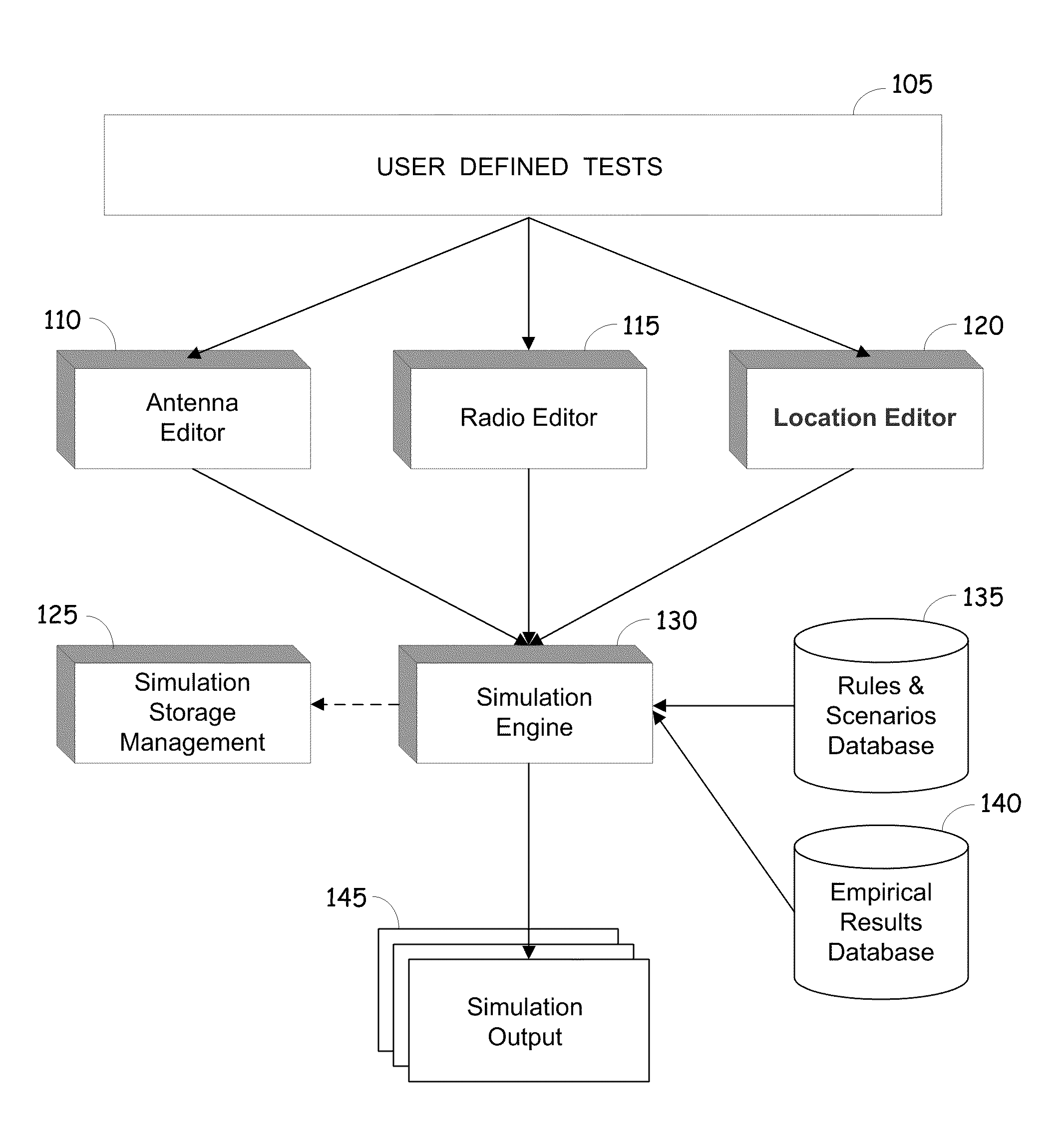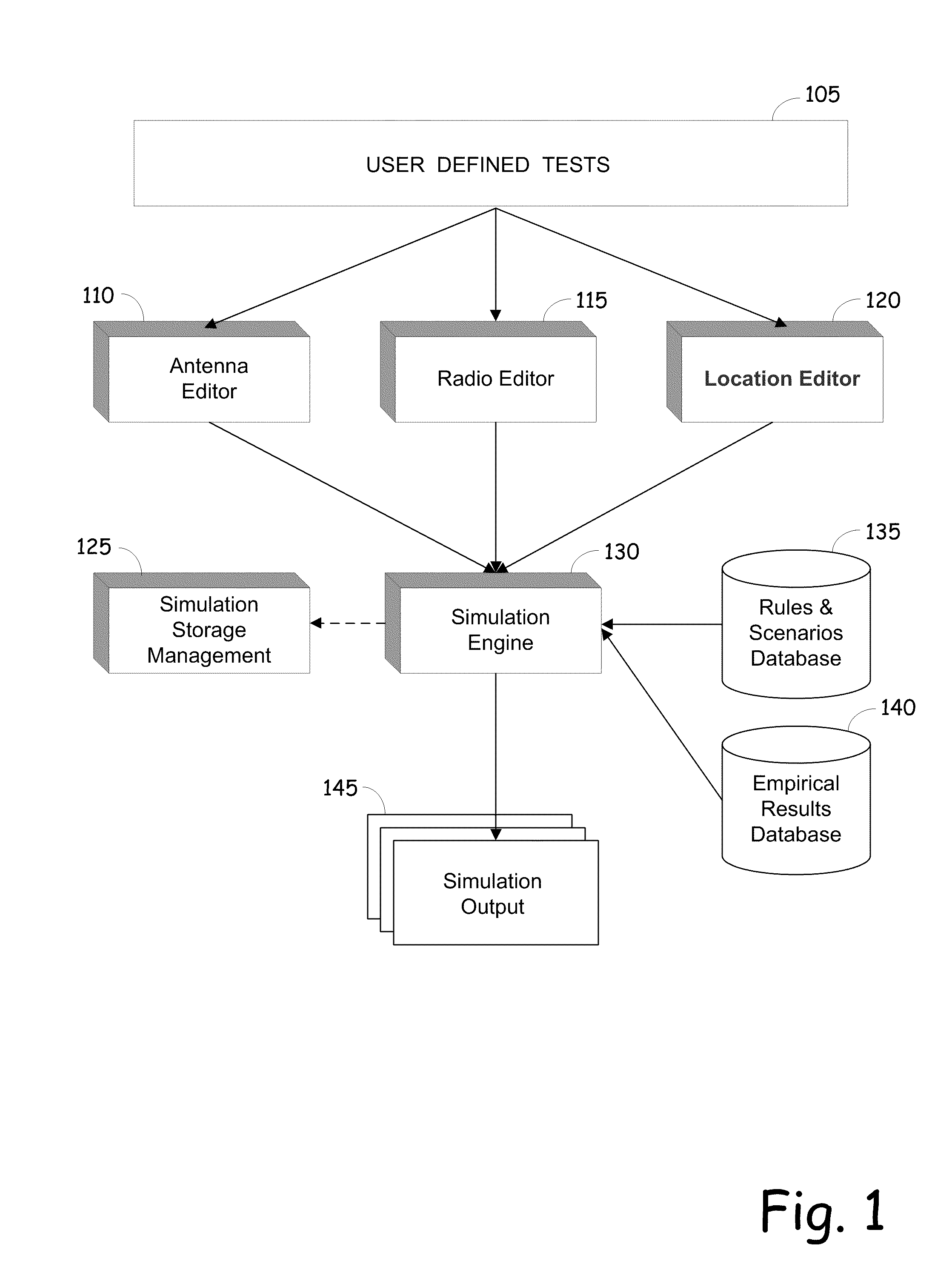Wireless network design simulation package
a wireless network and simulation package technology, applied in the field of wireless network design simulation software, can solve the problems of inability to provide simulation packages for wireless, non-cellular telecommunications network design, and inability to design wi-fi and other types of wireless networking systems, so as to improve the network planning and design process, the effect of increasing efficiency
- Summary
- Abstract
- Description
- Claims
- Application Information
AI Technical Summary
Benefits of technology
Problems solved by technology
Method used
Image
Examples
Embodiment Construction
[0025]The present disclosure presents solutions to the above-described needs in the art, as well as other needs in the art, by providing a system and method to automate the design and optimization of a wireless telecommunications network. More specifically, the disclosed embodiments provide the functionality to quickly and easily simulate configurations for various wireless telecommunications network components at predetermined geographical locations in order to predict performance of potential wireless network links. Various embodiments are also able to optimize network component configurations and locations to predict optimum network footprints. To transform data associated with predetermined geographical network link locations and wireless network component performance specifications, an embodiment may employ a series of specialized algorithms, or editors, to compile and simulate user provided configurations of all key aspects of each wireless link in a theoretical network footpr...
PUM
 Login to View More
Login to View More Abstract
Description
Claims
Application Information
 Login to View More
Login to View More - R&D
- Intellectual Property
- Life Sciences
- Materials
- Tech Scout
- Unparalleled Data Quality
- Higher Quality Content
- 60% Fewer Hallucinations
Browse by: Latest US Patents, China's latest patents, Technical Efficacy Thesaurus, Application Domain, Technology Topic, Popular Technical Reports.
© 2025 PatSnap. All rights reserved.Legal|Privacy policy|Modern Slavery Act Transparency Statement|Sitemap|About US| Contact US: help@patsnap.com



